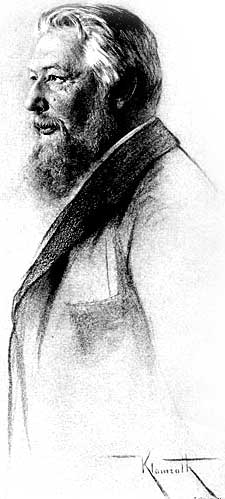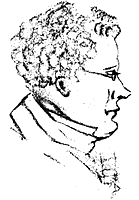![]()
![]()
One of the defining aspect of our universe is that change occurs over time. There are several factors which influence the rate of change. There is value in understanding those factors because they influence many aspects of our lives.
In general chemical change occurs when collisions occur between reaction species whether they be atoms, molecules or ions. As a result, the factors controlling reaction rates are those which influence how rapidly collisions occur or how effective the collisions are at causing change.
The rate of a reaction is usually measured by the amount of product produced per unit time in a specified volume. Since the number of collisions between the available reactants depends on the concentration of materials needed for the reaction, a greater concentration of reactants results in a faster reaction. Generally the rate of reaction is proportional to the concentration of each of the reactants. Doubling the concentration of one kind of reactant roughly doubles the rate of reaction.
Many reactions occur in sequential steps. The rate of reaction of each step is influenced by the concentration of reactants needed for that particular step. But each step occurs at its own rate. Some steps are slower and others much faster. Breaking strong chemical bonds requires more energetic collisions. So often those steps are slower than steps which only require substances to meet and form new bonds. Often the rates of the steps are different enough that only the slowest step determines the overall speed of reaction. Thus that slowest step is the rate-determining step.
Temperature influences reaction rates two ways: At higher temperatures the average speed of molecules is faster. When hotter the molecules come together to collide sooner. As result, at higher temperature a reaction occurs more rapidly. But the kinetic energy has a second effect on reaction rates. In general, energy is required whenever chemical bonds need to be broken. Even if a reaction is exothermic, releasing energy, the kinetic energy of the reactants is responsible for providing the activation energy needed to initially break the chemical bonds. Thus at higher temperature, it is more likely there will be sufficient energy to break the original bonds and thus initiate a reaction. Both of these conspire to make reactions occur faster at higher temperatures, and slow at lower temperatures. But because of the combination of effects, the rate is not proportional to the absolute (Kelvin) temperature. There are many situations where a mere 10°C increase in temperature doubles the rate of reaction. And there are a great many reactions where cooling below a certain threshold temperature essentially stops a reaction because few collisions ever have the activation energy necessary.

 Certain substances also have the capacity of increasing the rates of particular chemical reactions, but don't appear to be consumed in the process. Such a substance which increases the rate of a reaction is called a catalyst, a term derived from Greek καταλυειν, for its meaning of to pick up. The term was chosen by the Swedish chemist, Jöns Jakob Berzelius (←caricature at left, b1779, d1848), in 1836 to describe the substances which speed chemical reactions but somehow mysteriously remain unchanged after the reaction. In 1831 Alexander Mitscherlich had referred to the possibility of contact processes and Johann Wolfgang Döbereiner spoke of contact action and developed a flame igniter based on Hydrogen and a Platinum sponge which had became a huge commercial success in the 1820's. It was Humphrey Davy who had discovered that Platinum had the behavior later called catalysis. In the 1880s, the German chemist Wilhelm Ostwald (b1853, d1932, sketch at right→) started a series of systematic investigations while at Leipzig University studying reactions catalyzed by acids and bases. He found both that chemical reactions occur at finite rates, a feature useful for determining the strengths of acids and bases. Ostwald was awarded the 1909 Nobel Prize in Chemistry
Certain substances also have the capacity of increasing the rates of particular chemical reactions, but don't appear to be consumed in the process. Such a substance which increases the rate of a reaction is called a catalyst, a term derived from Greek καταλυειν, for its meaning of to pick up. The term was chosen by the Swedish chemist, Jöns Jakob Berzelius (←caricature at left, b1779, d1848), in 1836 to describe the substances which speed chemical reactions but somehow mysteriously remain unchanged after the reaction. In 1831 Alexander Mitscherlich had referred to the possibility of contact processes and Johann Wolfgang Döbereiner spoke of contact action and developed a flame igniter based on Hydrogen and a Platinum sponge which had became a huge commercial success in the 1820's. It was Humphrey Davy who had discovered that Platinum had the behavior later called catalysis. In the 1880s, the German chemist Wilhelm Ostwald (b1853, d1932, sketch at right→) started a series of systematic investigations while at Leipzig University studying reactions catalyzed by acids and bases. He found both that chemical reactions occur at finite rates, a feature useful for determining the strengths of acids and bases. Ostwald was awarded the 1909 Nobel Prize in Chemistry
It is now thought that catalysts are generally enmeshed in chemical reactions but are either regenerated or freed from the reacting materials by the end of the reaction. In many cases the surface of a solid catalyst provides a site which promotes the reaction. In other cases by combining temporarily with the reaction molecules, the catalyst provides an alternative mechanism for the reaction similar to a new express route connecting two cities. In both cases the potential energy barrier needed to break the chemical bonds in the reactants is lower, resulting in more of the molecules having sufficient energy to react. Often the catalyst provides a situation where the intermediate structure is more stable. Think of a person with an injured leg, hobbling from one location to another with an arm around a stabilizing assistant, or another trying to climb over a tall obstruction with someone on the top providing a helping hand. The mechanisms of many catalysts are now understood, but much research searching for and understanding other catalysts continues.
![]()
to next experiment: Chemical Equilibrium
to Nanochemistry, Colloidal & Physical Chemistry menu
to ie-Chemistry menu
to site menu